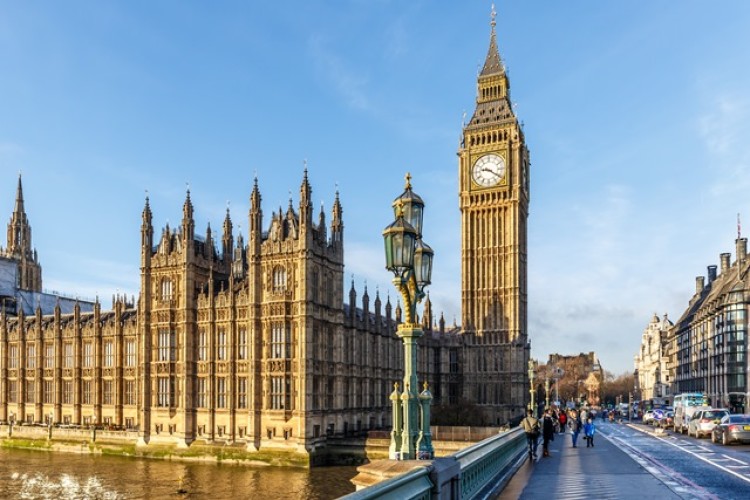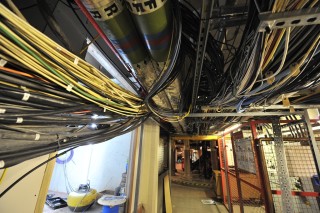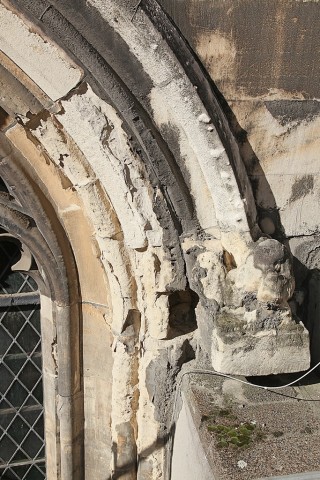The independent body set up last month to manage the renewal project will review options for how the restoration programme should be carried out, including the potential impact of the new ways of working developed in response to Covid-19.
The sponsor body will make recommendations on whether the current plans still present value for money, what compromises would need to be made to save money, what opportunities exist for a simpler, quicker and cheaper temporary accommodation and how ways of working developed in response to Covid-19 affect options or requirements for temporary accommodation.
During the coronavirus lockdown MPs have been working from home and, for the first time, voting remotely, electronically (although not without teething problems).
It has been suggested that this way of working could offer scope for cost reduction in creating a temporary home for parliament while the builders are in.
The report on which the current plans are based is now more than five years old. That Independent Options Appraisal (IOA), produced by a team led by Deloitte Real Estate with Aecom and HOK, said that £1bn of construction work was needed to repair the buildings. It put the total cost to the public purse of the whole operation at between £3.5bn and £5.7bn, depending on how the work was phased. [See our previous report here.]
On the basis of that report, both houses collectively agreed in 2018 that the ‘best and most cost-effective’ way of carrying out the restoration and renewal was to move out of the Palace of Westminster temporarily to let the builders get on with their work without disruption.
The review will consider whether that remains still the best and most cost-effective option.
The sponsor body, which was formally established last month, is the single client accountable to Parliament and oversees a delivery authority that will carry out the work. This way of working was set up under new legislation last year, the Parliamentary Buildings (Restoration and Renewal) Act.
Palace of Westminster authorities say that it was always envisaged that when the sponsor body was set up in law, and the delivery authority established, certain aspects of the programme would be reviewed.
But given the completely altered political and economic landscape after Covid-19, the review will need to be both ‘deeper and more wide-ranging’, says the restoration and renewal sponsor body.

Newer MPs may feel that while the £1bn costs for repair works cannot or should not be scrimped on, spending billions on a grand temporary home for offices and debating chambers may not be so essential any more, given MPs and Lords demonstrable ability to work from home. There is likely to be scope for reduction in the provision of temporary facilities.
The review will be led by Sarah Johnson, the former HS2 chief executive who was appointed chief executive of the sponsor body last year. It will involve infrastructure and programme management experts drawn from both the sponsor body and delivery authority.
Sarah Johnson said: “The restoration and renewal of the Houses of Parliament will be the biggest and most complex heritage project ever undertaken in the UK, protecting one of the world’s most recognisable buildings and likely to support thousands of jobs across the country.
“The sponsor body has been set up to ensure that the project is delivered in the most efficient way that delivers value for money. It is entirely appropriate that we should pause at this time to consider the validity of recommendations made over five years ago before either the sponsor body or delivery authority was formed.
“The impact of the current health crisis on public finances and parliament’s ways of working has made it even more essential that we review both the strategy for relocating the two Houses and the scope of the restoration of the Palace.”
Under existing plans, the House of Commons is expected to move to parliament’s Northern Estate, occupying a new temporary House of Commons chamber in Richmond House, on Whitehall. The House of Lords is expected to move temporarily to the QEII Conference Centre, opposite Westminster Abbey, in Westminster.
The sponsor body review is launched today and is expected to report in the autumn. The review will make recommendations which will be presented to the appropriate parliamentary authorities.
Meanwhile, the Palace of Westminster is said to be falling apart faster than it can be repaired. It is an enormous building with a floorplate of more than 1.2 million square feet, with 1,100 rooms, 100 staircases, three miles of passageways, four floors and 65 different levels.
According to the National Audit Office, parliament has spent more than £369m on maintenance since 2016. There is an increasing backlog of repairs estimated at over £1bn.
All the fire, heating, drainage, mechanical and electrical systems need replacing. Steam pipes run alongside electrical cables, and the sewage ejector system installed in 1888 is still in use today. Since the start of 2017 more than 40,000 problems have been reported in the Palace.
Got a story? Email news@theconstructionindex.co.uk





